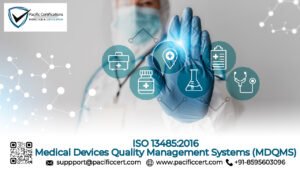Introduction to ISO 15197:2013
ISO 15197:2013 specifies the requirements for in vitro diagnostic (IVD) test systems intended for self-monitoring of blood glucose concentrations by individuals with diabetes mellitus. This standard is critical for ensuring that blood glucose monitoring systems are safe, effective, reliable and meet the needs of both healthcare professionals and patients.

Ensuring compliance with ISO 15197 helps manufacturers develop devices that deliver accurate results under a range of environmental and user conditions. It plays a vital role in protecting patient health, supporting diabetes management, and satisfying regulatory requirements in global markets.
Understanding ISO 15197
ISO 15197 provides a comprehensive framework, covering:
- Performance Requirements: Accuracy, precision, and reliability criteria for glucose monitoring devices.
- User Evaluation: Requirements to ensure devices are suitable for non-professional users.
- System Suitability: Verification of system performance under different operational conditions.
- Labeling and Instructions for Use: Clear and accurate information must be provided to end-users to ensure proper device usage.
Future revisions and related standards continue to emphasize improving device accuracy and expanding testing across different patient conditions, such as hematocrit variations and interfering substances.
Certification Process and Procedure
Step-by-Step Certification Journey:
- Initial System Evaluation:
- Review product design and technical specifications.
- Analyze risk assessments and intended use documentation.
- Performance Testing:
- Conduct laboratory evaluations to verify accuracy, precision, and linearity.
- Test device under various environmental and user-related conditions.
- User Evaluation Studies:
- Real-world studies involving lay users to demonstrate usability and performance in self-testing scenarios.
- Documentation Development:
- Compile design files, risk management files, clinical evaluation reports, and labeling.
- Internal Audits and Risk Review:
- Perform internal quality audits.
- Review risk management effectiveness.
- Management Review:
- Conduct periodic management evaluations to ensure system performance and regulatory alignment.
- Certification Audit:
- Engage a certification body for a formal certification audit.
- Certification Issuance:
- Certification is granted upon successful audit completion and compliance verification.
Documents Required for Certification
- Design and Technical Documentation
- Risk Management Reports (aligned with ISO 14971)
- Clinical and Analytical Performance Reports
- Instructions for Use and Labeling
- Usability Study Reports
- Internal Audit Reports
- Management Review Records
- Manufacturing and Process Validation Records
Eligibility Criteria
Manufacturers of in vitro diagnostic devices intended for self-monitoring of blood glucose by diabetic patients are eligible. Devices must meet performance and usability requirements to qualify for certification.
Certification Fees
Certification fees vary depending on device complexity, testing requirements, and organizational size. For a customized quotation, contact Pacific Certifications at support@pacificcert.com.
Certification Duration
A typical certification timeline includes:
- Performance testing and usability studies: 4-6 months
- Documentation preparation: 2-3 months
- Certification audit and issuance: 1-2 months
Total certification duration generally ranges from 7-12 months.
Requirements of ISO 15197 Certification
ISO 15197 compliance requires a structured approach across device design, performance validation, and user evaluation.

- Accuracy Requirements: Devices must meet specified accuracy limits across different glucose concentration ranges.
- Precision and Reproducibility: Consistent results must be demonstrated under varying conditions.
- Environmental Testing: Verification of device stability under temperature, humidity, and altitude variations.
- Usability Requirements: Devices must be user-friendly for laypersons, including individuals with impaired vision or dexterity.
- Risk Management: Implementation of risk control measures to mitigate identified hazards during design and post-market phases.
- Labeling and Instructions: Clear, concise, and validated information must be provided for end-user understanding and safe use.
Benefits of ISO 15197 Certification
Achieving ISO 15197 certification offers significant advantages to manufacturers and users.

- Safety: Devices deliver reliable results, enabling effective diabetes management.
- Compliance: Supports CE marking, FDA clearance, and other international regulatory approvals.
- Market Access: Opens opportunities in global healthcare markets requiring compliance with recognized standards.
- Marketing Advantage: Demonstrates commitment to quality, safety, and innovation.
- Reduced Liability Risks: Minimizes potential product liability through validated performance and usability.
- Brand Reputation: Builds trust among patients, healthcare professionals, and regulatory bodies.
The global market for self-monitoring blood glucose systems continues to expand, driven by rising diabetes prevalence and technological advancements. Regulatory agencies are placing greater emphasis on device accuracy and user safety, making ISO 15197 certification increasingly critical for manufacturers seeking to maintain market access and credibility.
How Pacific Certifications Can Help
Pacific Certifications offers complete audit and certification services for ISO 15197 compliance:
- Deep understanding of IVD device requirements and regulatory expectations.
- Certification recognized globally, supporting your international market ambitions.
- End-to-end support, from initial system evaluation to final certification.
- Post-certification support to maintain compliance through regular audits.
Begin your ISO 15197 certification journey by contacting Pacific Certifications at support@pacificcert.com.
FAQs for ISO 15197 Certification
While not mandatory, it is highly recommended and often essential for regulatory approvals such as CE marking and global market acceptance.
ISO 15197 requires performance evaluation across a range of low, normal, and high blood glucose concentrations.
User studies are critical to demonstrate device usability and performance in real-world self-testing environments.
Yes, ISO 15197 aligns closely with ISO 13485, and integration supports a stronger quality management system and regulatory readiness.
The manufacturer must make design modifications, revalidate performance, and repeat certification assessments.
Ready to get ISO 15189:2022 certified?
Contact Pacific Certifications to begin your certification journey today!
Suggested Certifications –








